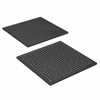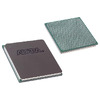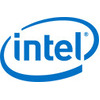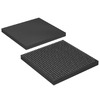Manufacturer Part Number
EP1S20F484C5N
Manufacturer
Intel
Introduction
The Intel EP1S20F484C5N is a high-performance embedded FPGA (Field Programmable Gate Array) that offers advanced features and capabilities for a wide range of applications. With its powerful logic resources, extensive memory, and flexible I/O, this FPGA can be utilized in various embedded systems, industrial automation, and communication solutions.
Product Features and Performance
1,846 Logic Array Blocks (LABs) / Configurable Logic Blocks (CLBs)
18,460 Logic Elements/Cells
1,669,248 Total RAM Bits
361 I/O Pins
Operating Voltage Range: 1.425V ~ 1.575V
Operating Temperature: 0°C to 85°C (Junction Temperature)
484-BBGA (Ball Grid Array) Package, 23x23 FBGA (Flip Chip Ball Grid Array) Footprint
Product Advantages
High-performance and reconfigurable logic for versatile application development
Abundant memory resources for data-intensive applications
Flexible I/O options for seamless integration into various system architectures
Low power consumption and wide operating temperature range for demanding environments
Key Reasons to Choose This Product
Robust and reliable performance for critical embedded applications
Scalable and customizable design capabilities to meet specific requirements
Extensive ecosystem of development tools and IP cores for rapid prototyping
Long-term support and commitment from a trusted industry leader, Intel
Quality and Safety Features
Rigorous manufacturing and testing processes to ensure product reliability
Compliance with industry standards and certifications for quality and safety
Compatibility
Designed to be compatible with a wide range of system architectures and interfaces
Application Areas
Embedded systems
Industrial automation and control
Communication and networking equipment
Medical devices
Aerospace and defense applications
Product Lifecycle
["The EP1S20F484C5N is an obsolete product, and Intel no longer manufactures this specific model.","Customers are advised to contact our website's sales team for information on available equivalent or alternative FPGA models that may suit their needs."]




 EP1S10F780C7ESAltera (Intel)
EP1S10F780C7ESAltera (Intel) EP1S20F672C7IntelIC FPGA 426 I/O 672FBGA
EP1S20F672C7IntelIC FPGA 426 I/O 672FBGA EP1S20F672
EP1S20F672